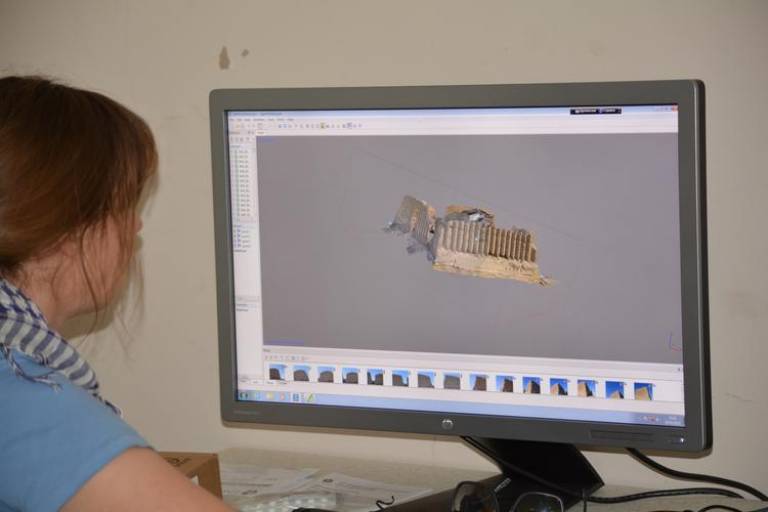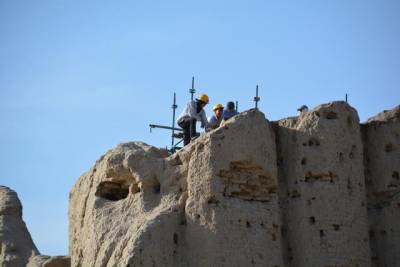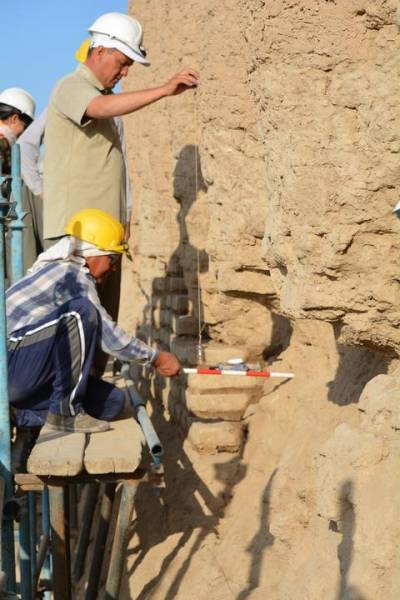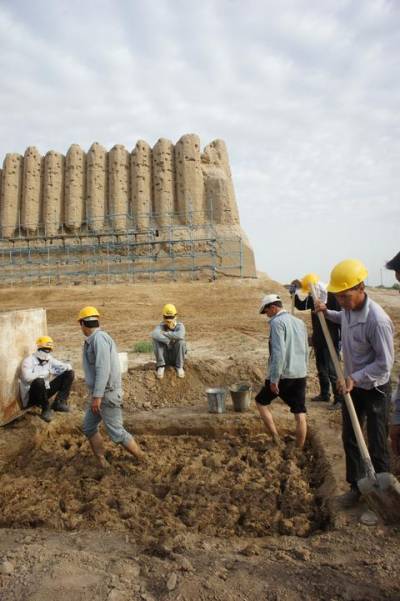
3D Recording & modelling
In order to better understand the monument, and to represent the findings of a wide array of specialists, a 3D recording and visualisation project is currently underway at the Great Kyz Kala. Photogrammetric recording took place in May 2015 and initial models have been created from this data.
The 3D model of the Great Kyz Kala records the current state of the monument, including the recent excavations undertaken by the Turkmen Ministry of Culture between 2012 and 2014. This is important for monitoring the state of the monument, recording archaeological and conservation interventions, and enabling in-depth discussions to take place about future of the monument - something which is essential for this international collaboration.
-The Great Kyz Kala in May 2015
Models of the landscape have also been created, to
understand the Great Kyz Kala within its wider environment.
-The Great Kyz Kala within its surrounding landscape, note the Little Kyz Kala to the South
-Landscape model without photo texture, which enables archaeologists to see the monument in its wider context, and picks out other buried features in the area, which might not be visible from the ground
This model is also useful for conservators to monitor the canal, which runs to the West of the Great Kyz Kala, investigate the directions of water runoff and possible pooling areas, as well as monitor the effects of visitors on the monuments.
Conservation

Specialist mudbrick building conservators from CRATerre-ENSAG, Grenoble began work on the southern face of the Great Kyz Kala in May 2015. This preventative conservation work aims to stabilise the monument and protect it from further deterioration.

The work was carried out in close collaboration with experienced local craftsmen, who work within the Archaeological Park, and an emphasis was put on combining expertise in local knowledge and international research. Mud mortar was mixed from locally sourced material.

Extensive observation and mapping of the Great Kyz Kala has enabled the conservation team to formulate an in-depth strategy to conserve the monument as well as enabling capacity building for conservation at the site
 Close
Close

